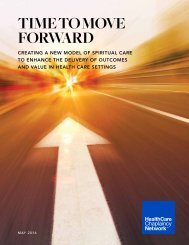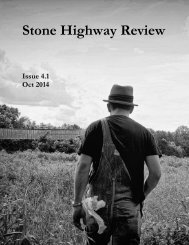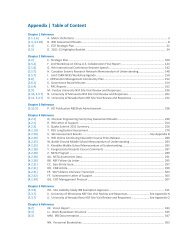Fries
Fries
Fries
You also want an ePaper? Increase the reach of your titles
YUMPU automatically turns print PDFs into web optimized ePapers that Google loves.
Charles C. <strong>Fries</strong>, linguistics and corpus linguisticsEnglish that “New York” is more probable than “Nevada” in the context“I come from –.”Certainly few synchronic descriptions of languages published in the journalLanguage during those years used quantitative analyses in serious ways.By contrast, most corpus linguists now accept the need for quantitative andqualitative analyses. Indeed, most current introductory textbooks on corpus linguistics(e.g. Biber, Conrad and Reppen, 1998; Gries, 2009; and Hunston, 2002)contain prominent discussions of quantitative methods and their appropriateuses for analyzing corpora. Further, computer concordancing programs oftencome integrated with sophisticated tools for statistical analysis to apply to theresults of the various searches performed.Of course merely counting phenomena does not automatically make a studygood, and it may be instructive to examine several instances where <strong>Fries</strong>’sanalyses could have been improved. I have mentioned at several points his studyof the intonation of yes-no questions, most recently criticising it for perhaps notlocating a representative sample. This defect might have been combatted had hebeen more persistent in his counting techniques. I am suggesting, that is, that inthis case he did not follow his principles far enough. Specifically he could haveexamined more carefully the contexts in which falling and rising intonationswere used. Actually, he did explore these contexts to some extent when heexplored alternations of intonation pattern used on repetitions of the samequestion (1964: 249). The relevant passage is provided below:There were some occasions when a question was repeated because itwas not heard clearly or understood. On these occasions it was thesame question asked twice by the same panelist, and directed to thesame person, but almost immediately after the first had been put. Thepoint of special interest here is the fact that in many of these instancesthe intonation pattern of the question as uttered the second time wasthe opposite of that used the first time. If this change had all been inone direction – if, for example, a question with rising intonation hadalways received a falling intonation in repetition, one would suspectthat the repetition itself constituted an instance of the “special circumstances”that are said to attach to the falling intonation used with yesnoquestions. But this was not the case. Questions with falling intonationswere repeated with rising intonations, questions with rising intonationswere repeated with falling intonations, and some questionswere repeated with the same intonations.109








